Affiliate links on Android Authority may earn us a commission. Learn more.
Spec-sheet skirmish: LG G4 vs the competition
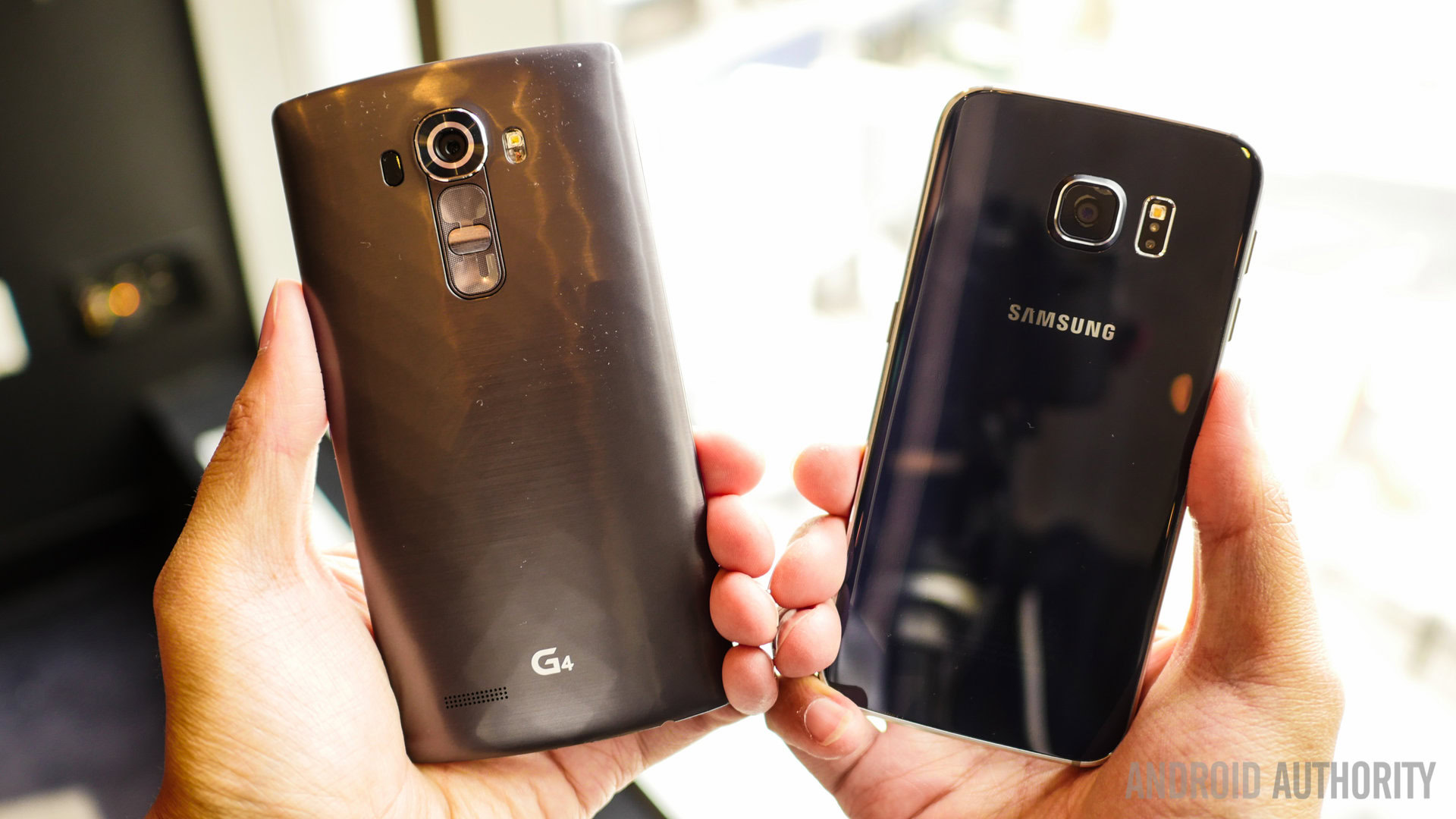
The LG G4 has just joined the ranks of this year’s flagship smartphones, so let’s delve right on in and see how its hardware stacks up with the very best on offer this year.
Display
Much like Samsung, LG prides itself on its industry-leading mobile display technology. Last year’s LG G3 was one of the first to offer a QHD resolution display, a specification that is now rivaled by Samsung but few others. LG may not have boosted the resolution any further this year, but has set about refining its existing technology.
| LG G4 | Samsung Galaxy S6 | HTC One M9 | |
|---|---|---|---|
Display | LG G4 5.5-inch, QHD LCD, 534ppi | Samsung Galaxy S6 5.1-inch, QHD AMOLED, 557ppi | HTC One M9 5.0-inch, 1080p LCD, 441 ppi |
SoC | LG G4 Qualcomm Snapdragon 808 | Samsung Galaxy S6 Samsung Exynos 7420 | HTC One M9 Qualcomm Snapdragon 810 |
CPU | LG G4 2xCortex A57 + 4xCortex A53 | Samsung Galaxy S6 4xCortex A57 + 4xCortex A53 | HTC One M9 4xCortex A57 + 4xCortex A53 |
GPU | LG G4 Adreno 418 | Samsung Galaxy S6 Mali-T760 MP8 | HTC One M9 Adreno 430 |
RAM | LG G4 3GB LPDDR3 | Samsung Galaxy S6 3GB LPDDR4 | HTC One M9 3GB LPDDR4 |
Storage | LG G4 32GB | Samsung Galaxy S6 32/64/128GB | HTC One M9 32GB |
MicroSD | LG G4 up to 128GB | Samsung Galaxy S6 no | HTC One M9 up to 128GB |
Rear Camera | LG G4 16MP, f/1.8, OIS, laser focus | Samsung Galaxy S6 16MP, f/1.9, OIS | HTC One M9 20.7MP |
Front Camera | LG G4 8MP | Samsung Galaxy S6 5MP | HTC One M9 4MP |
Battery | LG G4 3000 mAh | Samsung Galaxy S6 2550 mAh | HTC One M9 2840 mAh |
Dimensions | LG G4 149.8 x 76.2 x 10.16 mm, 155 g | Samsung Galaxy S6 143.4 x 70.5 x 6.8 mm, 138g | HTC One M9 144.6 x 69.7 x 9.6 mm, 157g |
LG boasts that its new Quantum display offers 20 percent greater color reproduction, a 25 percent improvement in brightness and 50 percent greater contrast than its last display. Some users complained that colors can look a little washed out with the LG G3, so it’s good to see the company address this issue. LG is targeting the Digital Cinema Initiatives standard for color expression and boasts a 98% accuracy to the standard, which may rival the high bar already set by the Samsung Galaxy S6 this year.
g the Digital Cinema Initiatives standard for color expression and boasts a 98% accuracy to the standard, which may rival the high bar already set by the Samsung Galaxy S6 this year.
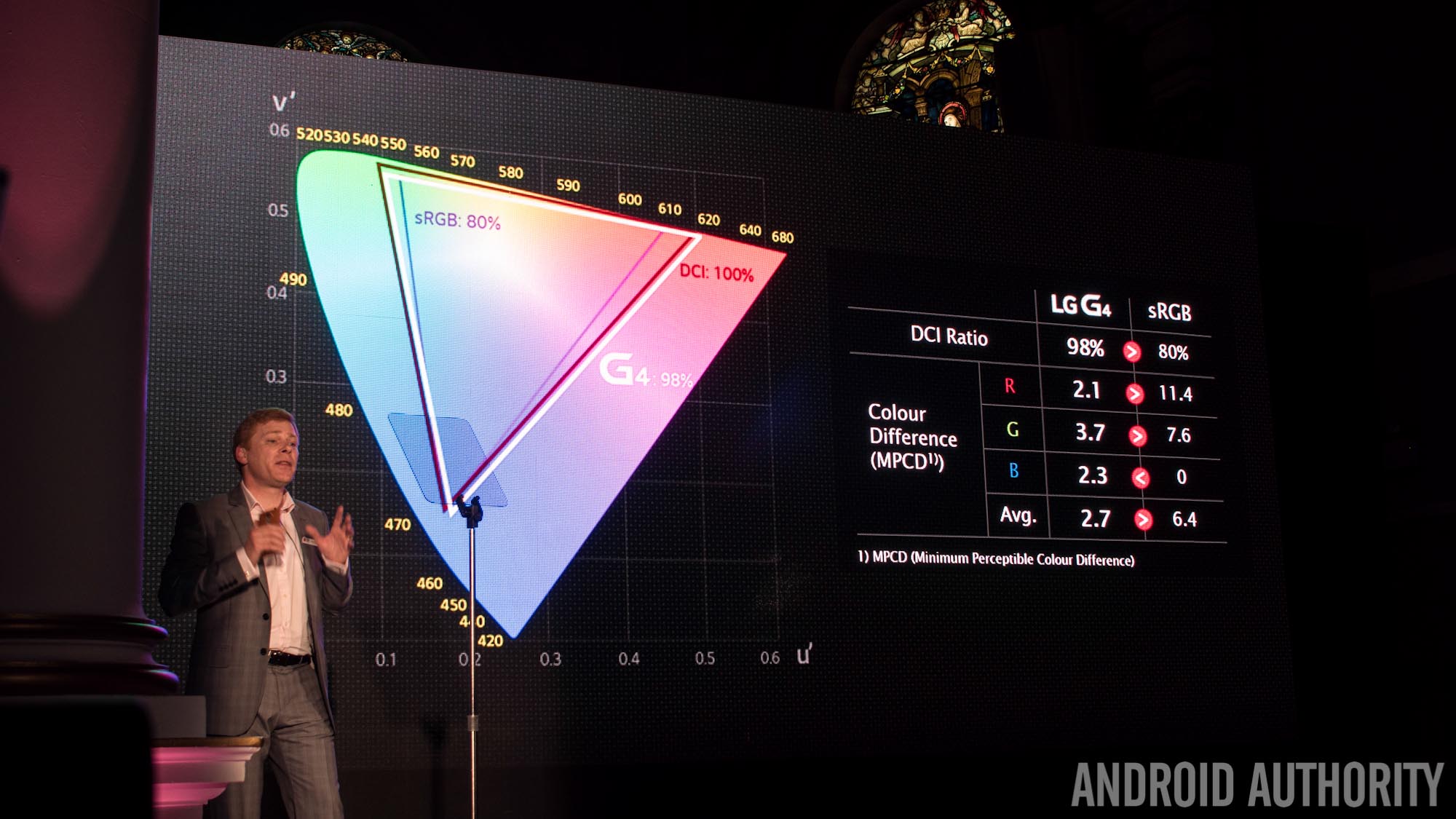
The other big talking point with LG’s latest smartphones is its curved display. Unlike the Samsung Galaxy S6 Edge or the bendy G Flex 2, the G4 features a subtler curve. Ergonomically, there’s a case to be made that a slight curve helps it sit in the hand and rest against the face a little more naturally, as was the argument made for the old Galaxy Nexus.
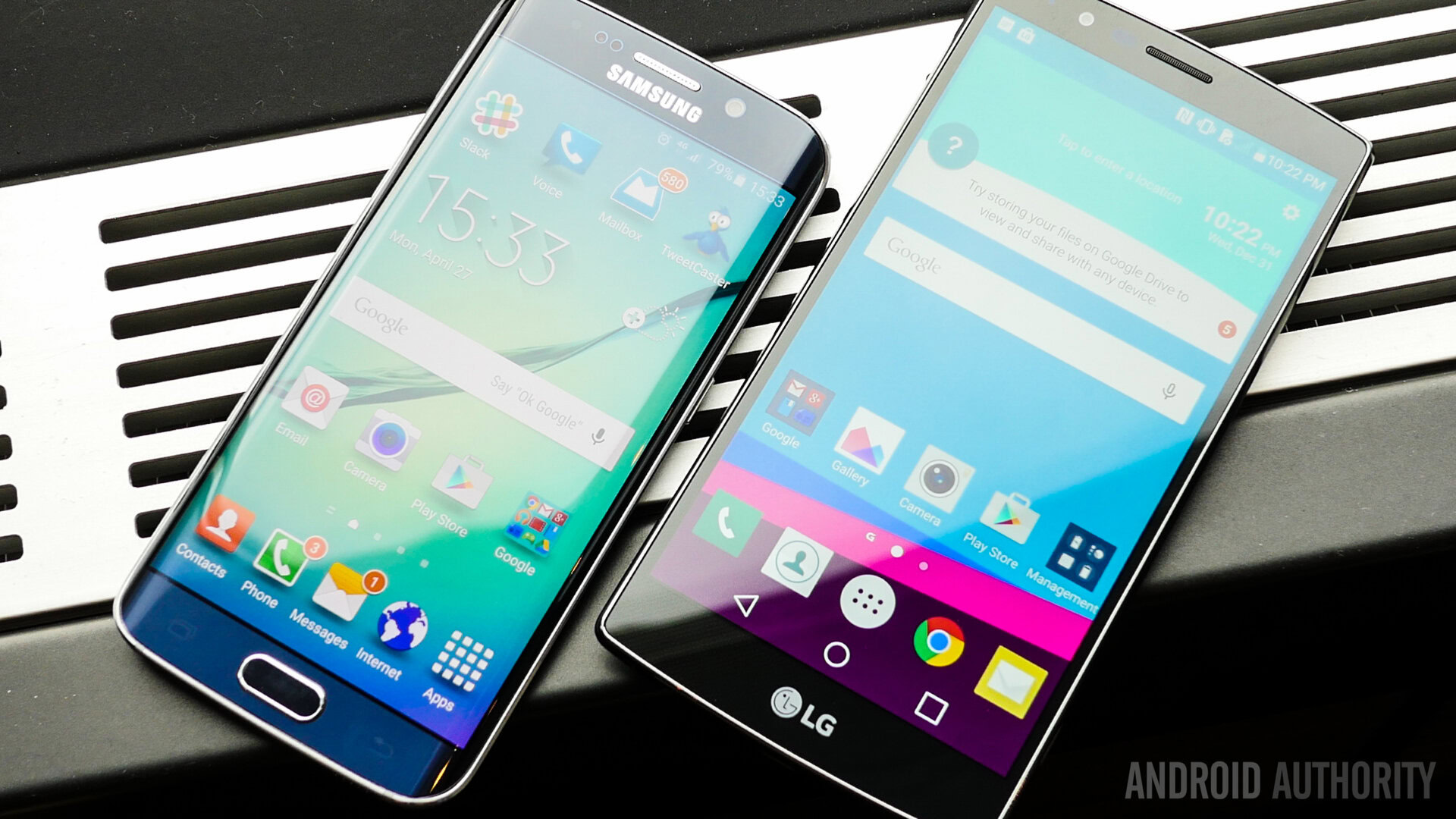
Most of this year’s flagships are still sticking to the tried and tested 1080p resolution, which provides an excellent balance between gaming performance, battery life and image clarity. QHD’s edge in pixel density is certainly a luxury rather than a major benefit, but LG’s new Quantum Dot display and Samsung’s AMOLED are also pushing display quality in terms other than resolution too.
Processing package
This year the talk is all about 64-bit processors, with the arrival of new high-end mobile SoCs from Qualcomm and Samsung. However, unlike LG’s earlier G Flex 2 smartphone, the G4 does not feature Qualcomm’s very high-end Snapdragon 810, but instead drops down one notch to a 64-bit Snapdragon 808 package.
There are several key differences between the two, most noticeably the absence of two high-performance Cortex-A72 cores, making the 808 a hexa-core rather than octa-core chip. While unlikely to make any difference for most day to day tasks and web-based experiences, gamers and very heavy multitaskers may notice some difference. That said, we’ve already found that the LG UX user interface runs better on the G4 than it does on the Snapdragon 810 powered G Flex 2, so LG may have done some serious optimizing.
| Sony Xperia Z4 | LG G Flex 2 | Nexus 6 | |
|---|---|---|---|
Display | Sony Xperia Z4 5.2-inch, 1080p LCD, 424ppi | LG G Flex 2 5.5-inch, 1080p P-OLED, 403ppi | Nexus 6 6-inch, QHD AMOLED, 493 ppi |
SoC | Sony Xperia Z4 Qualcomm Snapdragon 810 | LG G Flex 2 Qualcomm Snapdragon 810 | Nexus 6 Qualcomm Snapdragon 805 |
CPU | Sony Xperia Z4 4xCortex A57 + 4xCortex A53 | LG G Flex 2 4xCortex A57 + 4xCortex A53 | Nexus 6 4xKrait 450 |
GPU | Sony Xperia Z4 Adreno 430 | LG G Flex 2 Adreno 430 | Nexus 6 Adreno 420 |
RAM | Sony Xperia Z4 3GB LPDDR3 | LG G Flex 2 2/3GB LPDDR4 | Nexus 6 3GB LPDDR3 |
Storage | Sony Xperia Z4 32/64GB | LG G Flex 2 16/32GB | Nexus 6 32/64GB |
MicroSD | Sony Xperia Z4 up to 128GB | LG G Flex 2 up to 128GB | Nexus 6 no |
Rear Camera | Sony Xperia Z4 20.7MP | LG G Flex 2 13MP, OIS | Nexus 6 13MP, OIS |
Front Camera | Sony Xperia Z4 5.1MP | LG G Flex 2 2.1MP | Nexus 6 2MP |
Battery | Sony Xperia Z4 2930 mAh | LG G Flex 2 3000 mAh | Nexus 6 3200 mAh |
Dimensions | Sony Xperia Z4 146 x 72 x 6.9 mm, 144 g | LG G Flex 2 149.1 x 75.3 x 7.1-9.4 mm, 152g | Nexus 6 159.3 x 83 x 10.1 mm, 184g |
Cast your mind back to earlier discussions about big.LITTLE SoC designs and you’ll often find reference to hexa-core designs for smartphones and octa-core designs for tablets. In the pursuit of ever higher performance, smartphone OEMs have typically opted for as much power as possible, but the Snapdragon 808 is no slouch and may prove to offer a better balance of performance and battery life than its octa-core rivals, a similar argument is often made that 1080p is considered good enough by some. The smaller number of cores should also result in a cooler device as well, which might negate some of the expected performance differences. LG promises a 20 percent increase in battery life compared with the LG G3.
However, the Snapdragon 808 isn’t compatible with LPDDR4, meaning a drop back to LPDDR3 memory for LG. This leaves the handset behind the likes of the G Flex 2, Samsung Galaxy S6 and HTCOne M9, when it comes to the cutting edge. The Exynos 7420 and Snapdragon 810 allow for 25.6GB/s peak memory bandwidth, while LPDDR3-933 tops out around 15GB/s, although again this will only be felt in more extreme processing situations.
| Snapdragon 810 | Snapdragon 808 | Snapdragon 805 | |
|---|---|---|---|
Core Count | Snapdragon 810 8 | Snapdragon 808 6 | Snapdragon 805 4 |
CPU | Snapdragon 810 4x Cortex-A57 + 4x Cortex-A53 (ARMv8-A) | Snapdragon 808 2x Cortex-A57 + 4x Cortex A53 (ARMv8-A) | Snapdragon 805 4x Krait 450 (ARMv7-A) |
Memory | Snapdragon 810 2x 1555MHz LPDDR4 (25.6GBps) | Snapdragon 808 2x 933MHz LPDDR3 (15GBps) | Snapdragon 805 2x 800MHz LPDDR3 (12.8GBps) |
GPU | Snapdragon 810 Adreno 430 | Snapdragon 808 Adreno 418 | Snapdragon 805 Adreno 420 |
Data | Snapdragon 810 Cat 9 LTE | Snapdragon 808 Cat 9 LTE | Snapdragon 805 Cat 4 LTE |
Process | Snapdragon 810 20nm | Snapdragon 808 20nm | Snapdragon 805 28nm |
Finally, the LG G4 features an Adreno 418, which again is slower than the Snapdragon 810s Adreno 430 and sits behind some of last year’s Snapdragon 805 powered handsets, which feature an Adreno 420. Qualcomm doesn’t share enough about its GPU architecture for us to make too much of a comparison, but consumers might not see too much of a performance jump from last year’s LG G3, which was a bit hit and miss given the handset’s QHD resolution. Qualcomm suggests a performance increase of 20 percent between the 330 and 418, but we have no idea under what conditions that can be achieved.
In the SoC department, performance enthusiasts may not be thrilled with LG’s choice to opt for a Snapdragon 808 over the now commonplace Snapdragon 810 found in the One M9 and Xperia Z4, but we don’t have any complaints based on our initial hands-on time.
Camera
Camera technology was the other big focus feature for the G4 and the paper specs boast a sensor resolution that rivals the majority of flagships on the market today. As well as just increasing the sensor resolution, LG is focusing on sharper colors, thanks to an additional “color spectrum sensor”, optical image stabilization has been improved and the laser autofocus feature remains useful.
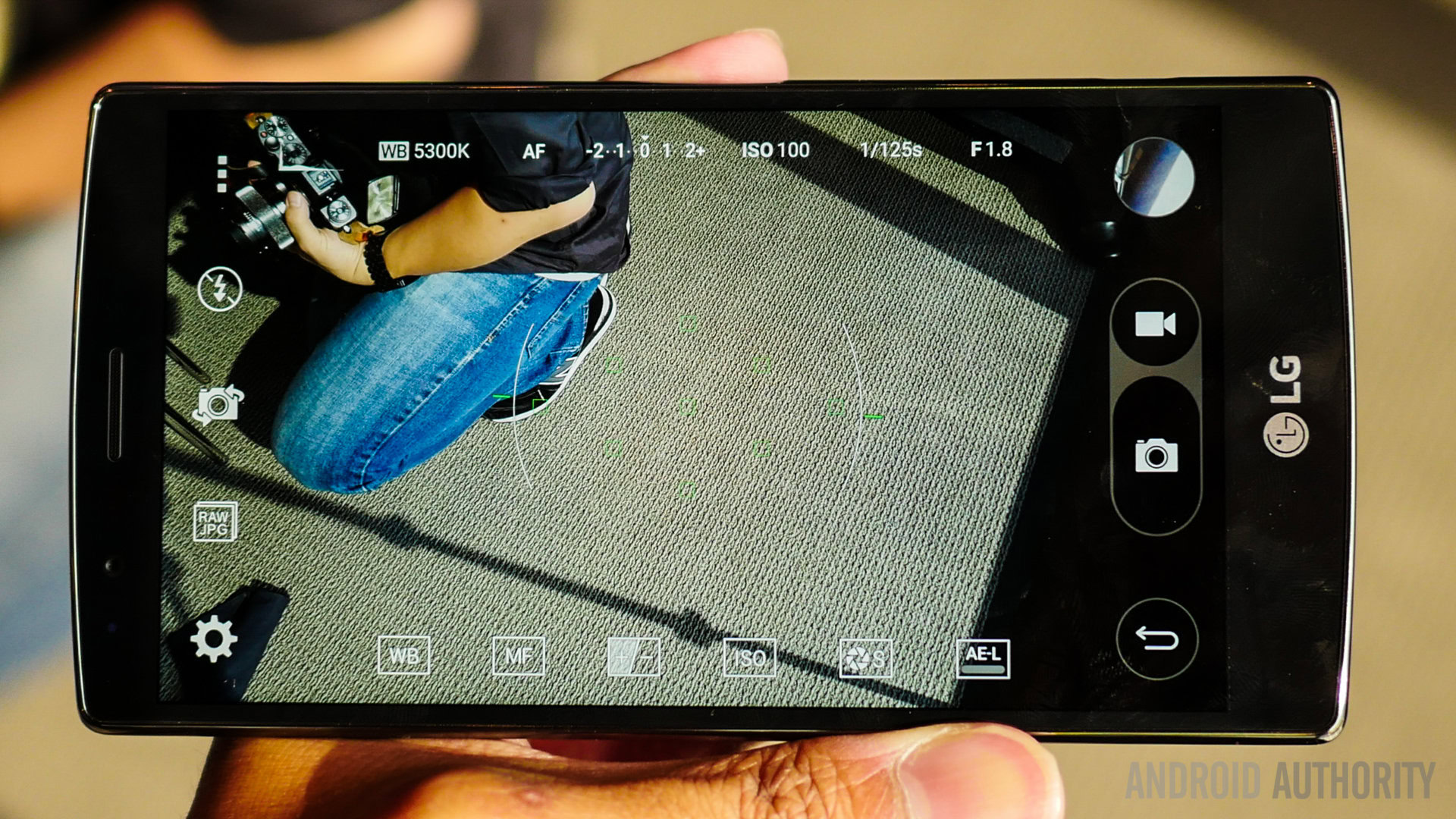
Low light performance should be one of the best around, thanks to the design’s f/1.8 aperture, which bests the Galaxy S6’s f/1.9 setup. With HTCagain not quite hitting mark in low light scenarios and very little changing in Sony’s setup, LG and Samsung may forge ahead of the pack in the camera segment.
Like other high-end devices, LG is giving additional power to photographers with the introduction of a new manual mode, which offers enhanced control over ISO, focus, and picture formats, among others. Both HTCand Samsung have included manual modes in their latest smartphones too.

On the front of the smartphone LG has included an 8MP sensor, which rivals the resolution of main smartphone cameras from a few years back. This year’s flagships have all upped their game, but LG has taken selfie quality up another notch. Although we should give a mention to the OPPO N3 for the most innovative self-experience.
(Not so) little extras
The absence of a removable battery and microSD card slot from the Samsung Galaxy S6 was a divisive design choice, especially given that most other flagship devices have at least kept the optional microSD card slot. LG keeps both options open, which might be a compelling factor for some. However, Samsung’s latest flagship still offers by far the most internal storage for those who want as much space as possible out of the box.
Design aesthetic and build materials has also become an increasingly important point of contrast in the high-end section. Both Samsung and LG have finally cottoned on to the praise heaped at HTC’s use of materials, and LG has arguably gone one step further to offer consumers almost a Moto Maker range of choice. While some may prefer HTC’s metal finish or Samsung’s glass, leather is no less a premium material that will suit some people’s tastes.
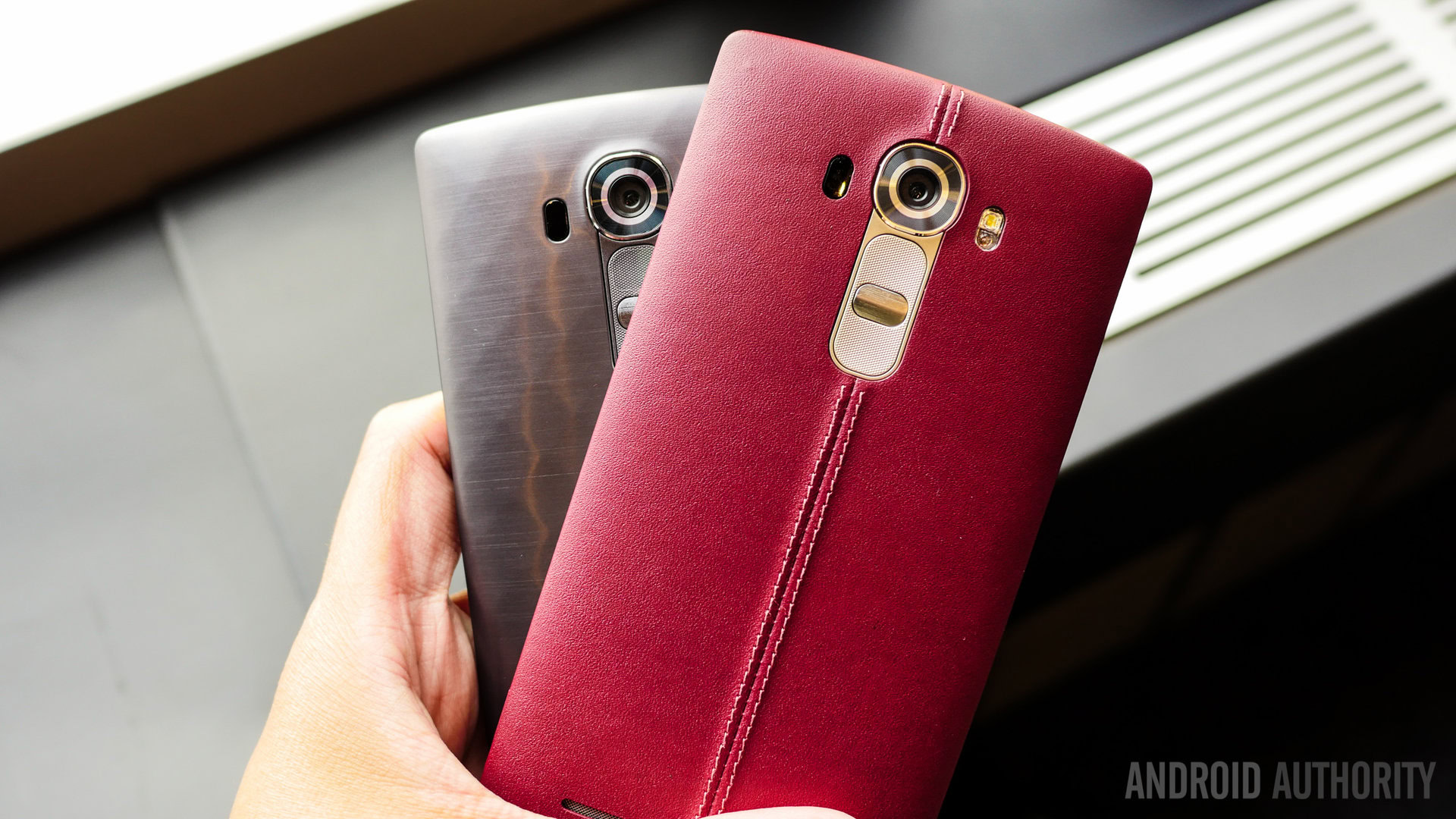
However, these new materials do come at the expensive of dust and water resistance, which were big features in the last two generation of smartphones. Sony’s Xperia Z4 leads the way with an IP68 rating this year, while the other flagships appear to have dropped mention of a rating altogether. LG’s G Flex 2 has a self-healing back, but that’s not quite as useful.
As for software, LG’s calendar and gallery apps have been tweaked for better integration and overall the focus has been on making LG’s UI more intelligent. There’s a meaningful difference between the software packages offered by each vendor. Samsung still leads the way with S Health but arguably still has the most clutter, while HTC’s BlinkFeed is excellent for eager readers and Sony is slick all around.
However, LG promises a more “Nexus like” experience this time around, which should appease those who have previously complained about lag ridden software. Samsung has also made a conscious effort to improve in this regard, although HTCand Sony have set a high bar as far a smooth and useful interfaces go. At the very least, there’s a dose of Android Lollipop all around with this year’s flagships.
[related_videos title=”A closer look at the LG G4:” align=”center” type=”custom” videos=”604644,604641,604645″]
Thoughts
Although the LG G4 may not dominate the paper specs like the G3 did last year, there’s a good case to be made that LG’s slightly different approach may result in a better overall user experience. By focusing on battery life, display and camera performance, and design aesthetics, LG could come out on top in the areas where consumers actually spend most of their time.
We’ll have to see if this balanced approach pays off when the handset makes it way to consumers in June.